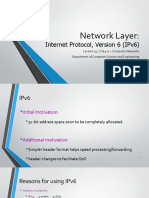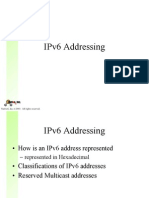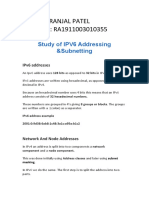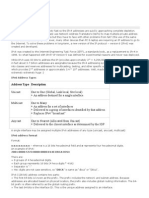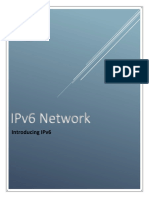0% found this document useful (0 votes)
84 views11 pagesIPv6 Configuration Lab
The document discusses IPv6 configuration including IPv6 address formats, address types, EUI-64 calculation, and static configuration in Packet Tracer. Key steps include enabling IPv6 routing, configuring IPv6 addresses on router interfaces and devices, and verifying connectivity using ping.
Uploaded by
jpaul42391Copyright
© © All Rights Reserved
We take content rights seriously. If you suspect this is your content, claim it here.
Available Formats
Download as PDF, TXT or read online on Scribd
0% found this document useful (0 votes)
84 views11 pagesIPv6 Configuration Lab
The document discusses IPv6 configuration including IPv6 address formats, address types, EUI-64 calculation, and static configuration in Packet Tracer. Key steps include enabling IPv6 routing, configuring IPv6 addresses on router interfaces and devices, and verifying connectivity using ping.
Uploaded by
jpaul42391Copyright
© © All Rights Reserved
We take content rights seriously. If you suspect this is your content, claim it here.
Available Formats
Download as PDF, TXT or read online on Scribd
/ 11





